Agni-4 ballistic missile successfully test-fired in Odisha
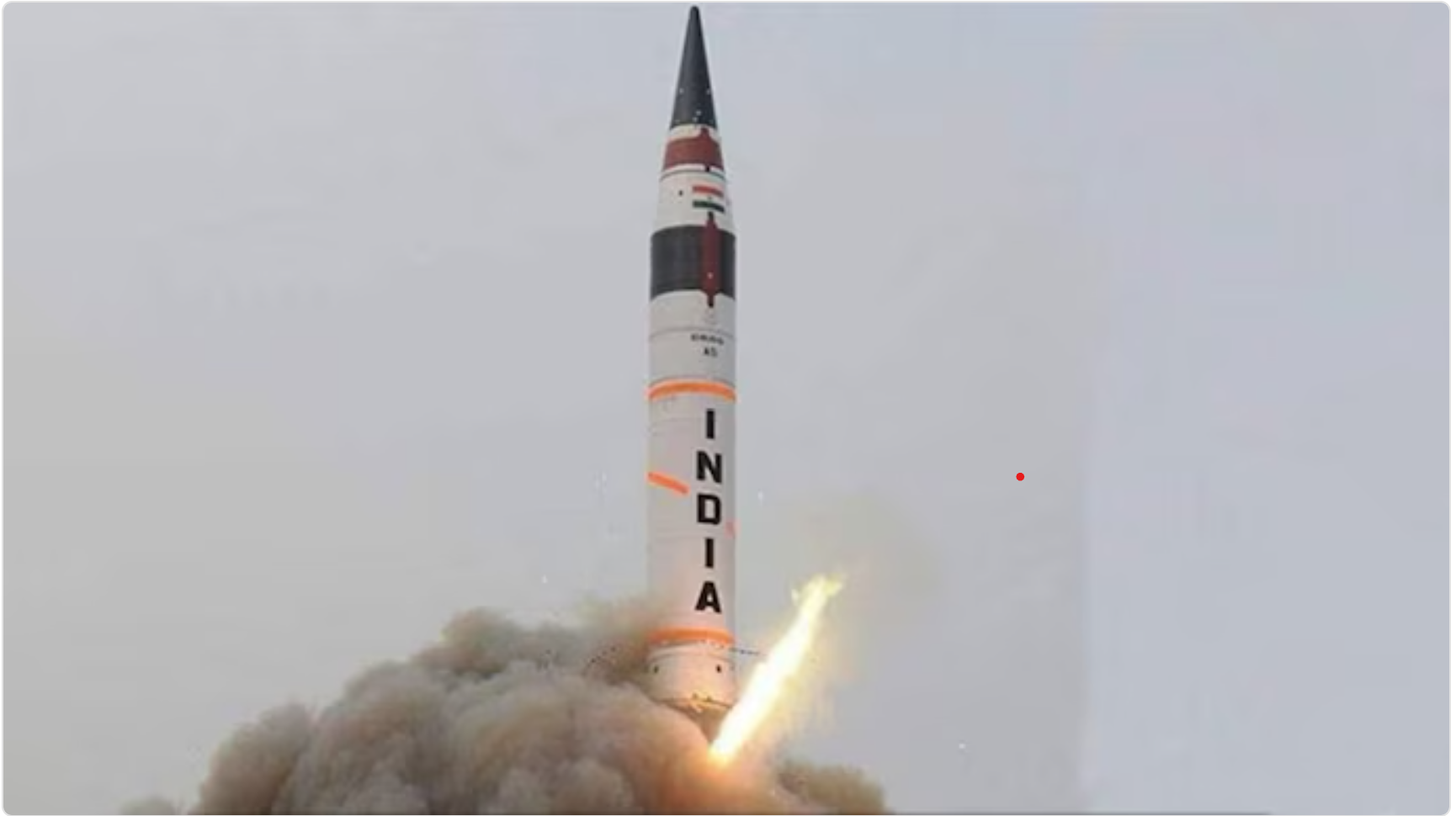
- 09 Sep 2024
In News:
India successfully test-fired the Agni-4 ballistic missile from the Integrated Test Range in Chandipur, Odisha. The test, conducted by the Strategic Forces Command (SFC) under India's Nuclear Command Authority (NCA), demonstrated the missile's operational and technical capabilities.
Key Details:
- Missile Specifications:
- Range: The Agni-4 missile has a maximum range of 4,000 kilometers.
- Payload: It can carry a payload of up to 1,000 kilograms.
- Length: The missile is approximately 20 meters long.
- Launch Platform: It is designed for deployment on a road-mobile launcher, enhancing its flexibility and mobility.
- Historical Context:
- Previous Test (2012): In its earlier test in 2012, Agni-4 successfully covered over 3,000 kilometers within 20 minutes. This was noted as the longest-range mission achieved by the Defence Research and Development Organisation (DRDO) at that time.
- Name Change: The Agni-4 was previously known as Agni-2 Prime.
- Development and Capabilities:
- Development: The Agni missiles, including the Agni-4, are developed by the DRDO, showcasing India's advancements in missile technology and strategic capabilities.
- Comparison with Agni-5: The Agni-4 is part of a series of Agni missiles that have progressively enhanced India's missile range and strike capabilities. The Agni-5 represents an even more advanced development in this series.
The successful test of Agni-4 underscores India's commitment to strengthening its strategic defense capabilities and maintaining its deterrence posture.
Swachh Bharat Mission averted 60,000-70,000 infant deaths annually: Study
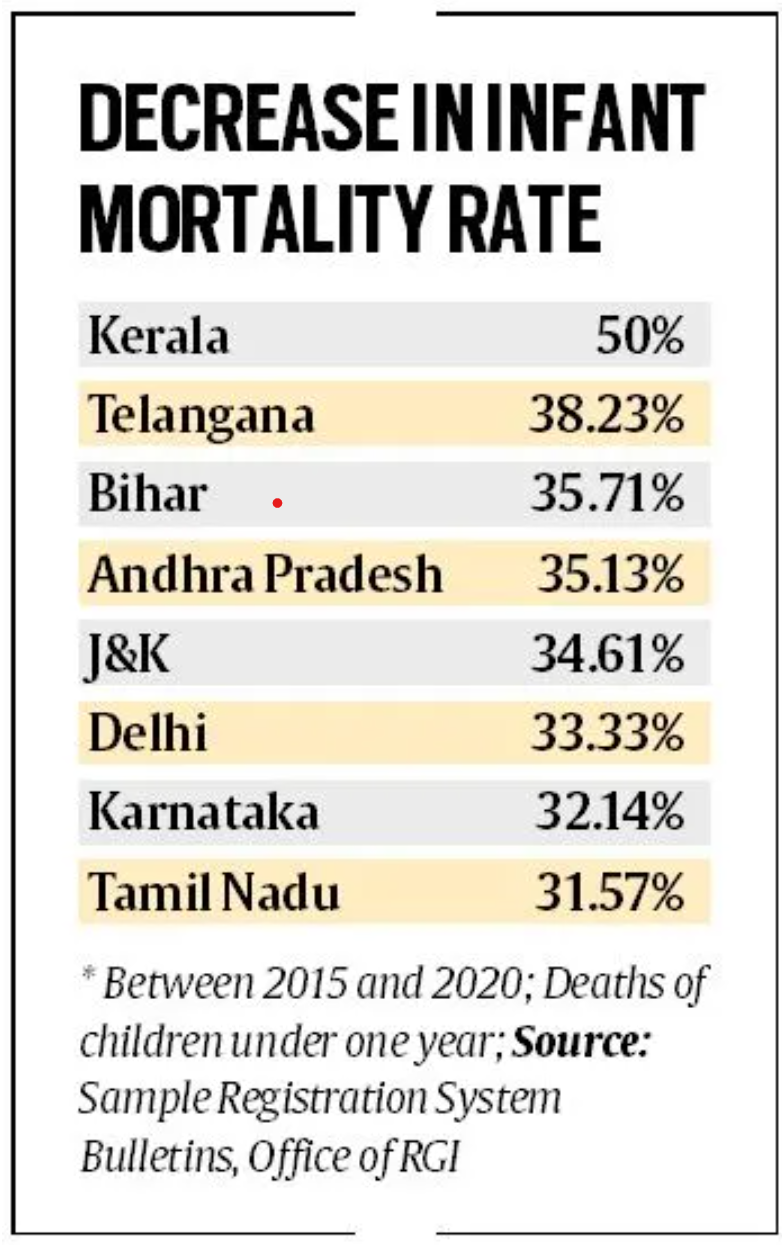
- 09 Sep 2024
- Launched on October 2, 2014, the Swachh Bharat Mission (SBM) has been pivotal in advancing sanitation infrastructure in India.
- By 2020, the mission had facilitated the construction of over 11 crore household toilets under its Grameen component and over 63 lakh individual and 6.36 lakh community public toilets under its Urban component. This extensive sanitation drive aimed at eradicating open defecation and improving public health.
Impact on Infant Mortality
A recent study published in Nature has highlighted the significant health benefits resulting from SBM. According to the report, titled ‘Toilet Construction under the Swachh Bharat Mission and Infant Mortality in India,’ the initiative may have averted approximately 60,000 to 70,000 infant deaths annually between 2014 and 2020. The study, analyzed data from 35 states and 640 districts from 2011 to 2020, focusing on the infant mortality rate (IMR) and under-five mortality rate (U5MR).
Key Findings
- Decrease in Infant Mortality:
- The study established an inverse relationship between toilet access and infant mortality. It noted that districts with increased toilet coverage saw a marked decline in infant deaths.
- In 2003, the average toilet coverage in districts was below 40%, rising to over 60% by 2020. Correspondingly, infant mortality rates fell from an average of 48.9 per 1,000 live births in 2003 to 23.5 per 1,000 live births in 2020.
- Significant Decline:
- The research observed a substantial decline in infant mortality rates from 40 per 1,000 live births in 2012 to below 30 per 1,000 live births by 2019.
- The mortality rate for children under five also dropped from about 44 per 1,000 live births in 2012 to below 30 by 2019.
- Regional Variations:
- Despite the overall improvement, certain regions like parts of Uttar Pradesh, Madhya Pradesh, Odisha, and Andhra Pradesh continued to report higher infant mortality rates, ranging between 45-60 per 1,000 live births in 2020.
Conclusion
The SBM has demonstrably improved sanitation in India, with a notable reduction in infant mortality rates attributed to the increased availability of household toilets. While the mission has achieved significant progress, ongoing efforts and investments in broader public health infrastructure are essential to address persistent regional disparities and sustain health gains.
Jal Sanchay Jan Bhagidari Initiative
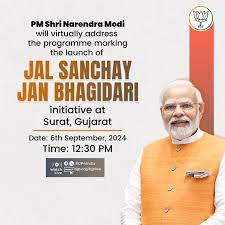
- 09 Sep 2024
In News:
Prime Minister Shri Narendra Modi recently launched the ‘Jal Sanchay Jan Bhagidari’ initiative via video conferencing from Surat, Gujarat.
Key Points:
- Campaign and Objectives:
- Objective: The initiative seeks to bolster water conservation through extensive public and governmental collaboration.
- Scope: About 24,800 rainwater harvesting structures will be constructed across Gujarat.
- Approach: Emphasizes a Whole-of-Society and Whole-of-Government approach to water management.
- Significance:
- Cultural Significance: PM Modi highlighted that water conservation is deeply embedded in Indian culture, with water revered as a divine entity and rivers considered Goddesses.
- Policy and Virtue: He stated that water conservation transcends policy and is both an effort and a virtue, reflecting social commitment and cultural consciousness.
- Future Challenges: The Prime Minister acknowledged the exacerbating impact of water scarcity due to climate change, urging a shift to the ‘Reduce, Reuse, Recharge, and Recycle’ mantra for sustainable water management.
- Impact of Drought and Water Scarcity:
- Recent Challenges: The drought affecting the Amazon region and other parts of India has highlighted the urgent need for effective water conservation strategies.
- Water Table Decline: Significant declines in river levels, such as the Rio Negro reaching its lowest minimum (12.7 meters) on record, and the death of endangered species due to low water levels underscore the crisis.
- Government Initiatives:
- Jal Jeevan Mission: Aims to provide piped water to every home, with significant progress noted from 3 crore households to over 15 crore.
- Jal Shakti Abhiyan: Focuses on renovation and construction of water sources with widespread public participation.
- Amrit Sarovar: Over 60,000 Amrit Sarovars have been constructed under this campaign, which began during the Azadi Ka Amrit Mahotsav.
- Innovative Solutions and Technological Integration:
- Drip Irrigation: Promotion of water-efficient farming techniques like drip irrigation to ensure sustainable agriculture.
- Support for Farmers: Encouragement for cultivating less water-intensive crops such as pulses and millets.
- Role of Industries:
- CSR Contributions: Industries have played a significant role in water conservation through initiatives like Net Zero Liquid Discharge Standards and the completion of 10,000 borewell recharge structures in Gujarat.
- Future Plans: The ‘Jal Sanchay-Jan Bhagidari Abhiyan’ aims to create an additional 24,000 recharge structures.
- Conclusion and Vision:
- Global Leadership: PM Modi expressed his belief that India can become a global leader in water conservation.
- Public Movement: Stressed the importance of continuing public participation in water conservation to make India a model for global sustainability.
Background: The ‘Jal Sanchay Jan Bhagidari’ initiative builds on the success of the earlier Jal Sanchay program by involving citizens, local bodies, and industries in water conservation efforts. The initiative aligns with the vision of water security and aims to mobilize collective action for long-term sustainability.
Key Data:
- Construction of 24,800 rainwater harvesting structures.
- Significant increase in tap water connections from 3 crore to over 15 crore households.
- Creation of more than 60,000 Amrit Sarovars across the country.
- Completion of 10,000 borewell recharge structures in Gujarat.
Climate change drives Amazon rainforest's record drought, study finds
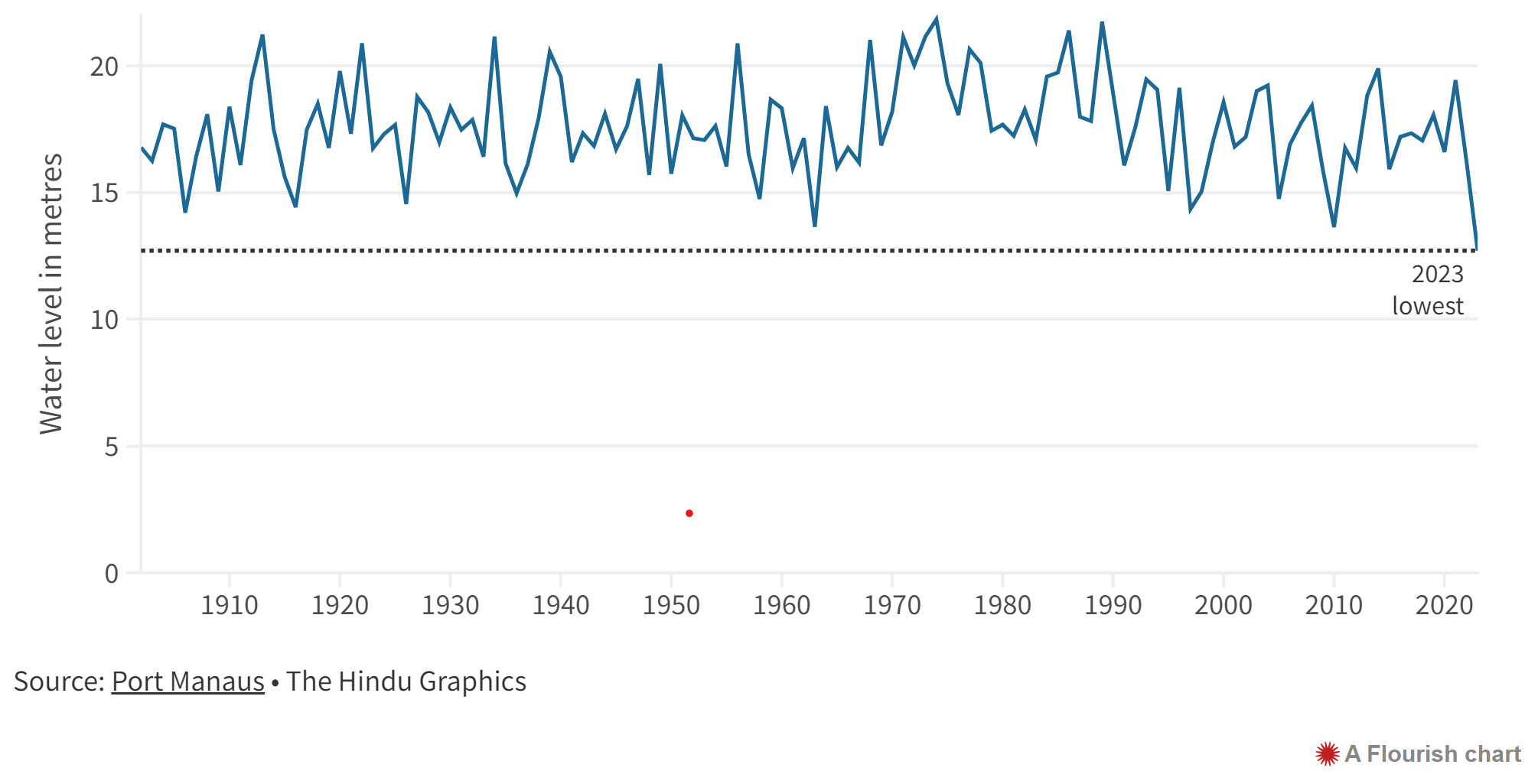
- 09 Sep 2024
In News:
The drought that hit all nine Amazon rainforest countries - including Brazil, Colombia, Venezuela and Peru - is expected to worsen in 2024
Role of Climate Change:
- Likelihood Increase: Climate change made the drought 30 times more likely.
- Temperature and Rainfall: It drove extreme high temperatures and contributed to lower rainfall.
Future Projections:
- Expected Worsening: The drought is predicted to worsen in 2024, with the rainy season expected to recede in May.
Impact on Ecosystems:
- River Levels: Rivers have reached their lowest levels on record, with the Rio Negro river falling to its lowest minimum (12.7 meters) since records began in 1902.
- Dolphin Deaths: At least 178 endangered pink and gray Amazon river dolphins died due to low water levels and high temperatures.
- Fish Deaths: Thousands of fish died from low oxygen levels in Amazon tributaries.
Impact on Human Life:
- Disruptions: Waterways dried up rapidly, forcing people to undertake long journeys across dried river sections to access essential goods like food and medicine.
Contributing Factors:
- El Niño Influence: Periodic warming in the Eastern Pacific Ocean (El Niño) contributed to decreased rainfall but not to higher temperatures.
Potential Consequences:
- Forest Fires and Biome Health: The drought could exacerbate forest fires, combined with climate change and deforestation, potentially pushing the Amazon toward a point of no return where it ceases to be a lush rainforest.
- Previous Droughts: While the region has experienced at least three intense droughts in the past 20 years, this one’s impact on the entire Amazon basin is unprecedented.
Uncommon Cyclones in the Arabian Sea
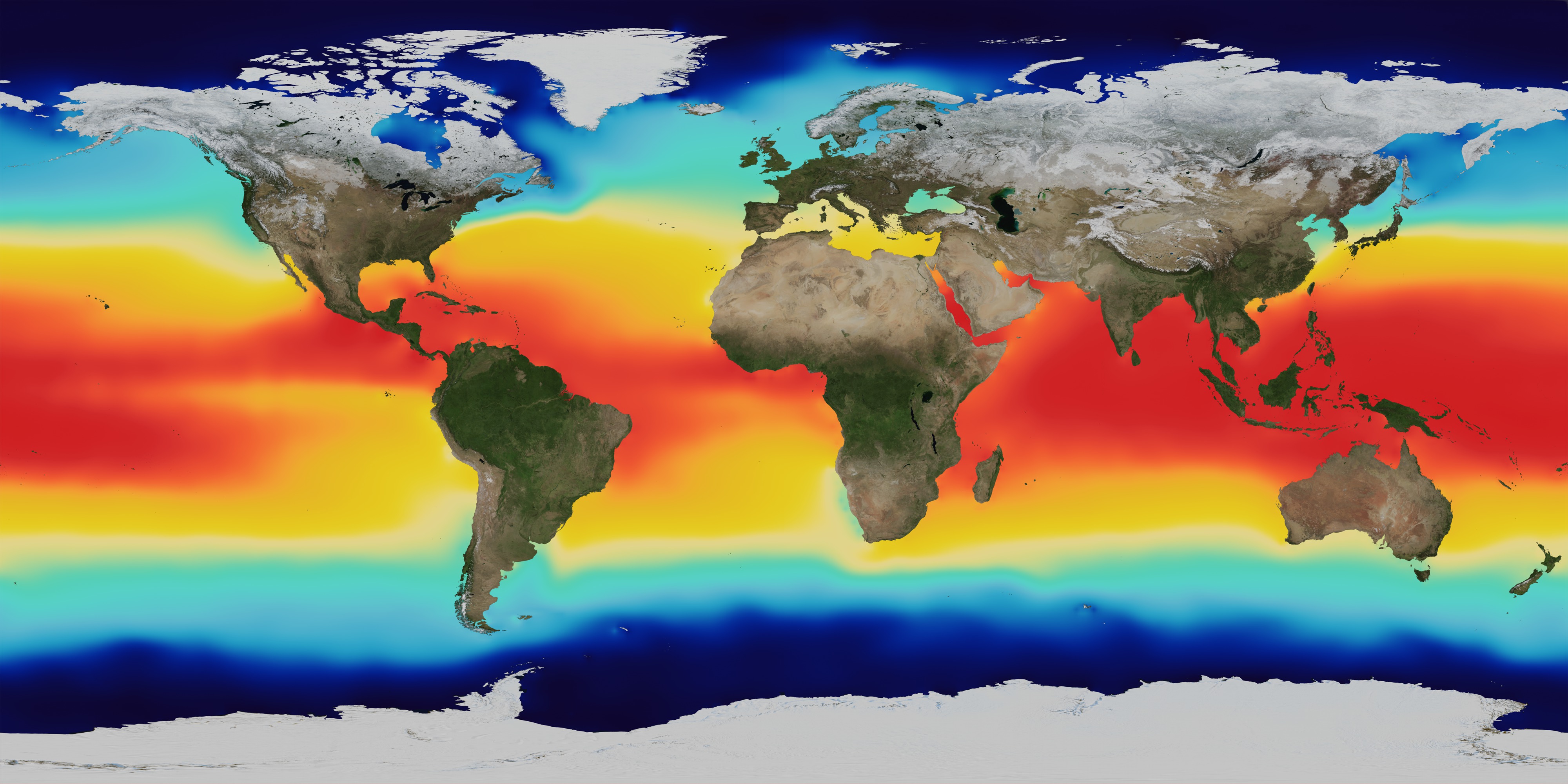
- 09 Sep 2024
Cyclones are intense weather systems with low atmospheric pressure and rotating winds, forming over warm tropical waters. These storms cause severe weather, including heavy rainfall, strong winds, and storm surges. Cyclones are categorized based on wind speeds, from tropical depressions to severe cyclonic storms. Warm ocean surfaces and high humidity fuel these storms, with atmospheric conditions like wind shear and moisture influencing their strength and formation.
The North Indian Ocean plays a key role in global weather systems, particularly the summer monsoon. Warm waters from the Arabian Sea and Bay of Bengal are crucial for moisture generation during monsoon seasons. However, despite the warm ocean surfaces that typically promote cyclones, this region has fewer cyclones compared to other tropical oceans. A mix of factors—both promoting and suppressing cyclone formation—makes the North Indian Ocean a unique and less cyclone-prone area.
The Indian Ocean stands out due to its monsoonal circulation, marked by seasonal wind reversals north of the equator. It also has "oceanic tunnels" connecting it to the Pacific and Southern Oceans, which influence its weather. The Pacific tunnel introduces warm water into the upper layers, while the Southern Ocean brings cooler waters into deeper levels. These oceanographic features contribute to distinct weather patterns, including influencing the formation and behavior of cyclones.
As the pre-monsoon season begins and the Sun moves into the northern hemisphere, the Arabian Sea rapidly warms. The Bay of Bengal, typically warmer, heats further, driving atmospheric convection and rainfall. These warming patterns make the Bay of Bengal more prone to cyclones, while the Arabian Sea, with its cooler waters and stronger wind shear, experiences less cyclone activity. These conditions contribute to significant differences in cyclone formation between the two seas.
Impact of Climate Change on Cyclones in the Indian Ocean
Climate change is amplifying the Indian Ocean’s warming, bringing in more heat from the Pacific Ocean while the Southern Ocean pushes warmer waters into deeper layers. These changes, combined with shifts in winds and atmospheric humidity, are causing the Indian Ocean to warm at a rapid pace. This warming is affecting cyclone formation, increasing the frequency and intensity of storms. The Indian Ocean acts as a "clearinghouse" for ocean warming, impacting global weather patterns and intensifying cyclone activity.
Monsoon and Cyclone Seasons in the North Indian Ocean
- The monsoon heavily influences cyclone activity in the region. During the monsoon, strong winds cool the Arabian Sea, reducing the likelihood of cyclone formation. In contrast, the Bay of Bengal sees more low-pressure systems, although many do not become cyclones due to wind shear that weakens their energy.
- The North Indian Ocean experiences two distinct cyclone seasons—pre-monsoon and post-monsoon—unlike other regions that typically have just one. Cooler temperatures and stronger wind shear keep cyclone numbers low in the Arabian Sea, compared to the Bay of Bengal.
- Cyclone Asna, formed in August 2023, was a rare cyclone for this time of year. It developed from a land-based depression that moved over the Arabian Sea, marking the first August cyclone in the region since 1981. This rare occurrence highlights how rapidly warming oceans, influenced by climate change and El Niño, can drive unexpected cyclone formations.
